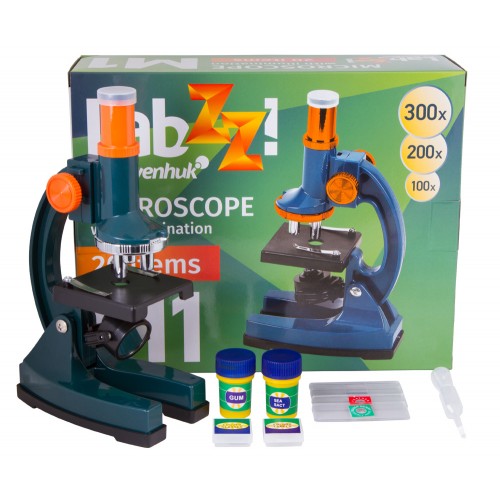
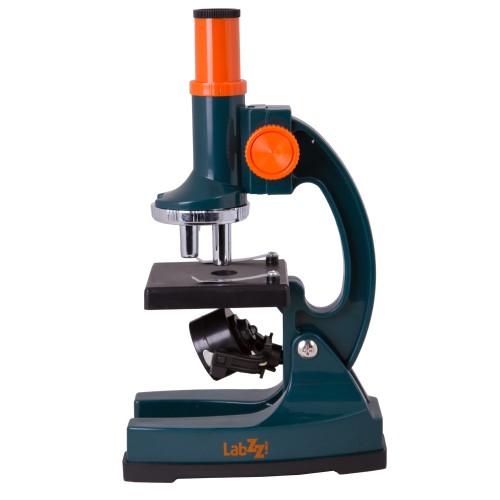
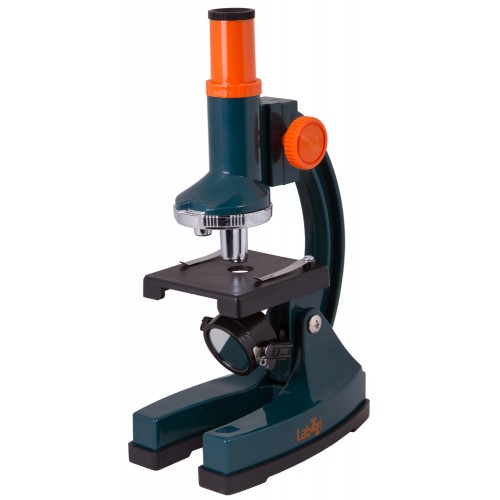
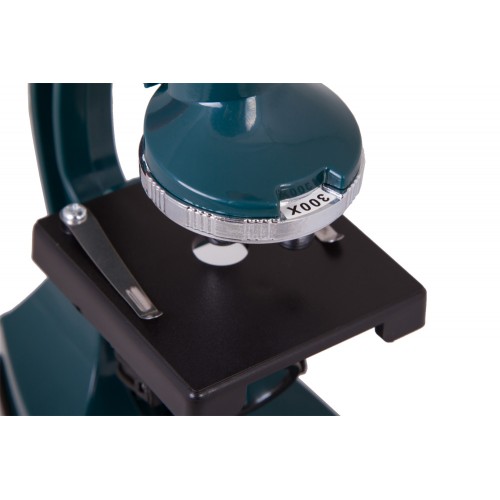
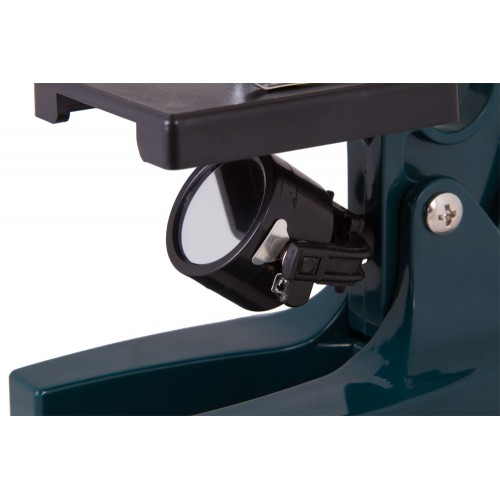
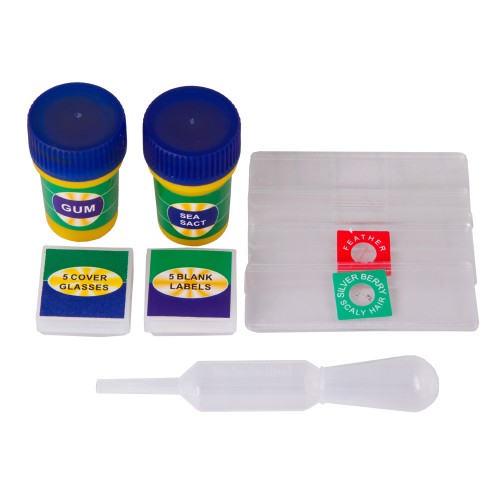






Levenhuk LabZZ M1 mikroskops ir izstrādāts priekš jauniem mikrokosma pētniekiem. Ar šo mikroskopu jaunie zinātnieki spers savus pirmos soļus zinātnē. Komplektā ir viss nepieciešamais šim mērķim: viegli lietojams mikroskops, sagatavoti mikroskopa slaidi un īpaši darbarīki, lai strādātu ar mikroskopa paraugiem. Bērni ar instrumentu var tikt galā patstāvīgi un viņi var izpētīt ikdienišķo lietu apbrīnojamās uzbūves.
Levenhuk LabZZ M1 mikroskops ir aprīkots ar apakšējo apgaismes ķermeni, kas ļaus veikt caurspīdīgu mikroskopa paraugu novērošanu. Pieejamajos paraugos ir gatavi mikroskopa slaidi, dzīvība ūdens lāsē un daudzas citas lietas. Gaismas kvēlspuldze. Šī lampa darbojas ar 2 AA baterijām (nav iekļautas).
Bērni var arī radīt paši savus slaidus, ne tikai pētīt jau gatavos, kas ir iekļauti iepakojumā. Paraugu ir jānovieto tukšā slaida vidū, jānostiprina un, tad jāuzliek virsū stikliņu. Visinteresantākos paraugus var paturēt tālākiem nākotnes novērojumiem.
Levenhuk LabZZ M1 mikroskopam ir trīs palielinājumi: 100x, 200x un 300x. Jūs varat izvēlēties vēlamo palielinājumu pagriežot mikroskopa revolvergalviņu. Asumu pielāgo ar atsevišķu rokturi. Priekšmetgaldiņš ir aprīkots ar īpašām metāla spailēm, kas novērojumu laikā notur vietā pētāmo paraugu.
Īpašības:
- Vienkāršs modelis, radīts īpaši priekš bērniem
- Lēcas izgatavotas no augstas kvalitātes optiskās plastmasas
- Palielinājums līdz 300x
- Ar baterijām darbināms apgaismojums
- Viegls plastmasas korpuss
- Iekļauts eksperimentu komplekts
Komplektā ietilpst:
- Mikroskops
- Okulār
- Pipeti
- Sagatavoti slaidi (2 gb.)
- Tukši slaidi (2 gb.)
- Kabatiņas (5 gb.)
- Slaidu uzlīmes (5 gb.)
- Līme
- Jūras sāls
Levenhuk LabZZ M1 mikroskops nav savienojams ar Levenhuk C NG digitālajām kamerām, jo tam ir nestandarta okulāra tubusa diametrs.
Paramecium caudatum - your first friend from the microworld
11/21/2016
Paramecium caudatum is perhaps one of the first protozoans that a young naturalist would explore. These organisms live in fresh standing water. They can also be found in an aquarium, especially if it hasn’t been cleaned for a long time. My ciliate-shoes were taken from the aquarium. Of course, there are only a few ciliate-shoes in aquarium water – the possibility of finding one of them in your microscope’s eyepiece is extremely low. Therefore, we need to increase their concentration. To do so, take a jar (about 17 fluid ounces or 0.5 liters), fill it with aquarium water, put a small spoiled onion and banana peel inside. Put the jar in a warm dark place for 5 to 7 days (don’t close it with a lid).


Paramecium caudatum. Animation. Magnification: 64x.
The average size of Paramecium caudatum is 0.02 inches (0.5 mm). For locomotion Paramecium caudatum uses its cilia (about 15 thousand cilia cover its little body!). Moreover, it has two nuclei (a large macronucleus is responsible for nutrition, respiration, metabolism, etc.; and a small micronucleus – for reproduction). Paramecium caudatum feeds on bacteria or algae. The food is caught by an oral groove covered in cilia and then goes to the cell mouth. It is then digested in the digestive vacuole (gullet). Undigested leftovers are ‘thrown out in the open’ through an anal pore (cytoproct). To remove all excess water, our heroine has two contractile vacuoles. They work like pumps on a boat, pumping excess water out of its body. Paramecium caudatum maintains its slipper-like shape thanks to a special membrane (pellicle).

